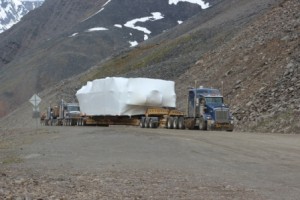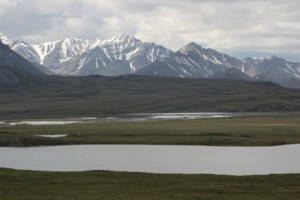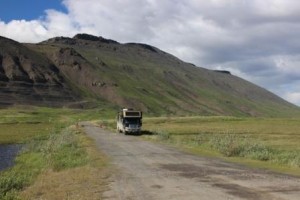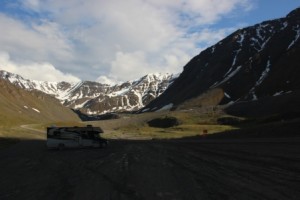Pigpen is plagued with a dirt cloud that engulfs him where ever he goes. Picture us, doused in mosquito repellant and cocooned in our “don’t leave home without it” head nets. As we walk, the mosquitoes follow us like a living shadow. I can feel them running into my hands and even my clothes. Whenever we stop they mob us and we are completely enveloped. Pigpen, how can you stand it? It is pretty distracting even when they aren’t biting.
The reason we braved the bugs was a hike to Marion Creek Falls. To add to the challenge, we are apparently on a section of permafrost is this region of discontinuous permafrost. Great. That means that the ground is actually several feet of peat moss and lichens interspersed with tussocks of grass and low bramble; all of this on top of ice. More than a couple footfalls turns it to uneven, ankle twisting, sloppy mush. I have one boot full of mud and Kent one full of nice smelly water. Now we can say that we have hiked on permafrost…and can forewarn others, it is exhausting.
Oh yeah, the falls were pretty.





